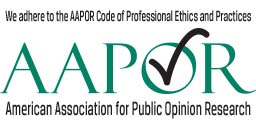Intercultural Business Communication: An Analysis of Ethnocentrism in a Globalized Business Environment
Keywords:
Ethnocentrism, Globalization, Intercultural Business CommunicationAbstract
Twenty-first century organizations, rather small, medium, or large are increasingly finding themselves competing in global rather than local markets. This paper explores the current literature on the increasing global influence of ethnocentrism and its affect on international business communication. It also provides a model for overcoming ethnocentrism in a multicultural business environment. The goal of the paper is to provide practitioners with a realistic approach for overcoming ethnocentrism in a multicultural workplace.
Downloads
References
Amaram, D. (2007). Cultural diversity: Implications for workplace management. Journal of Diversity Management, 2(4), 1- 6.
Bennett, M. (1998). Basic concepts of intercultural communication. Boston: Intercultural Press, Inc.
Bovee, C. L., & Thill, J. V. (2010). Business communication today (10th ed.). Boston: Prentice Hall.
Bowes, B... (2007, December). The business case for workplace diversity. CMA
Management, 81(8), 14-16. Retrieved June 24, 2011, from ABI/INFORM Global.
(Document ID: 1430001721).
Chaney, L.H. and Martin, J.S. (2007). Intercultural business communication (4th ed.). Upper Saddle River, NJ: Pearson Prentice Hall.
Chen, G. M. & Starosta, W.J. (2004). Communication among cultural diversities: A Dialogue. International and Intercultural Communication Annual, 27, 3-16.
Cheesebro, T., O’Connor, L., and Rios, F. (2010). Communicating in the workplace Upper Saddle River, N.J.: Prentice Hall.
Early, P.C. (1997). Face, harmony, and social structure: An analysis of organizational behavior across cultures. New York: Oxford University Press.
Ferraro, G. P. (2001). Global brains: Knowledge and competencies for the twenty-first century. NC: Intercultural Associates, Inc.
Giles, H. & Coupland, N. (1991). Accommodation theory: Communication, context, and consequence. Contexts of accommodation. New York: Cambridge University Press.
Giles, H. (2007). Communication accommodation theory. In Whaley, Bryan B.; Samter, Wendy. Mahwah, N.J: Lawrence Erlbaum.
Gupta, S... (2008, October). Mine the Potential Of Multicultural Teams. HR
Magazine, 53(10), 79-80, 82, 84.
Fisher, G. (1997). Mindsets (2nd ed.) Yarmouth, ME: Intercultural Press.
Flatley, M., Rentz, K., & Lentz, P. (2012). Business communication (2nd ed.) New York:
McGraw-Hill.
Gibbons, J. (2005). Book Review: Law enforcement, communication and community. Journal of
Multilingual and Multicultural Development 26 (3), 265-267.
Golden, J. C., & Rieke, R. D. (1971). The rhetoric of Black Americans. Columbus, OH: Merrill.
Grimes, D. & Richard, O. (2003). Could communication form impact organizations’ experience
with diversity? Journal of Business Communication, 49(1), 7 – 27.
Hall, E. T. (1959). The silent language. Greenwich, CT: Fawcett Publications.
Harzing, S., & Feely, A. J. (2008). The language barrier and its implications for HQ-subsidiary
relationships. Cross cultural management, (15), 49 – 61.
Hilton, C. & Kameda, N. (1999). Email and the internet as international business communication teaching and research tools: A case study. Journal of Education for business, 35(4), 181-185.
Hoa, L. (2010). Color lines, country lines: Race, immigration, and wealth stratification in America. New York: Russell Sage Foundation.
Huang, Geng G. (2012). Overcoming ethnocentrism. Retrieved March 9, 2012 from:http://ccomm.bravehost.com/Report2.html.
Lin, Y., Rancer, A. S. & Trimbitas, O. (2005). Ethnocentrism and intercultural-willingness-to-
communicate: A cross-cultural comparison between Romanian and US American college students. Journal of Intercultural Communication, 34, 138-151.
Martin J.S. & Chaney, L.H. (2006). Global business etiquette: a guide to international communication and customs. Westport, Conn: Praeger Publishers.
Moon, C. J. & Wooliams, P. (2000). Managing cross-cultural business ethics. Journal of business ethics, (9), 14 – 17.
Neuliep, J.W., Chaudoir, M., & McCroskey, J.C. (2001). A cross-cultural comparison of
ethnocentrism among Japanese and United States college students. Communication Research Reports, 18(2), 137-146.
Orbe, M. (1998). Constructing co cultural theory: An Explication of culture, power, and communication. Thousand Oaks, NJ: Sage Publications.
Parrillo, V. N. (1996). Diversity in America. Thousand Oaks, CA: Pine Forge Press.
Peltokorpi, V. (2007) Intercultural communication patterns and tactics: Nordic expatriates in Japan. International Business Review, (16), 68 – 82.
Piaget, J. (1977). Gruber, H.E.; Voneche, J.J. eds. The essential Piaget. New York: Basic Books.
Rumbaut, R. G. (1997). Assimilation and its discontents: Between rhetoric and reality
International Migration Review, Vol. 31, No. 4, Special Issue: Immigrant Adaptation and
Native-Born Responses in the Making of Americans, pp. 923-960.
Ruch, W.V. (1989). International handbook of corporate communication. Jefferson: McFarland.
Sumner, W.G. (1906). Folkways. Boston: Ginn.
Teagarden, M.B. (2008) Emerging market competition in a globalizing world. Thunderbird International Business Review, 50(3), 143-144.
Tung, R.L. & Miller, E.L. (1990). Managing in the twenty-first century: The need for global Orientation. Management International Review, 30(1), 5-18.
U.S. Census Bureau (2007), “National Population Projection (Summary Files),” available online
at http://www.census.gov/population/www/projections/natsum-T1html.
Vyrgo, L. (2011). “Assimilation versus acculturation”, available online at
http://lv9234eva.tripod.com/lybravyrgo/id32.html.
Victor, D. (1992). International business communication. New York: Harper Collins.








 a Creative Commons Attribution 4.0 International License.
a Creative Commons Attribution 4.0 International License.